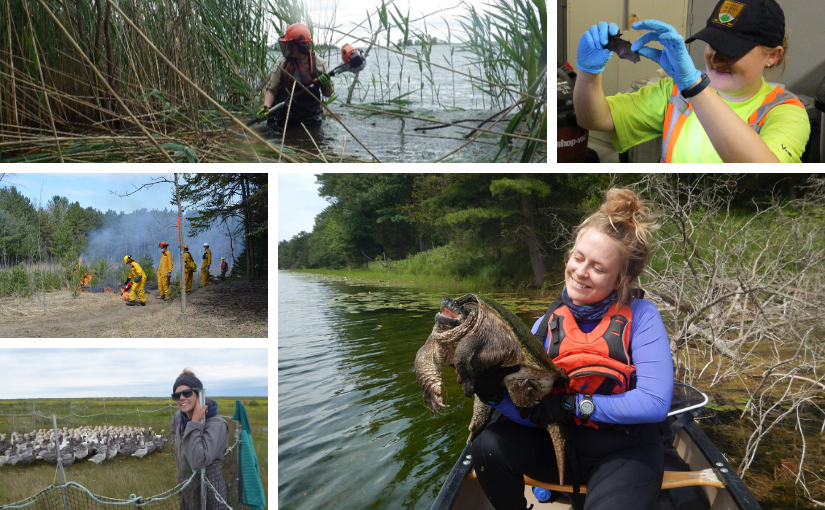Happy International Day of Women and Girls in Science!
Our female scientists are absolutely integral to Ontario Parks, working as researchers, biologists, ecologists, and more!
Take a look at a few of our awesome scientists:
Erica Barkley, Zone Ecologist
Erica helps staff protect and enhance ecological integrity at Ontario Parks.
Her favourite part of the job is applying science to bring back rare habitats, like tallgrass prairie. She leads prescribed burns which are carefully planned and well supported by science and fire behaviour modelling.

Erica also works on promoting citizen science initiatives like iNaturalist, recognizing that park visitors can be scientists too, and contribute to our understanding of provincial parks and conservation reserves.
“I have had great role models and mentors who have paved the way to saying there are no limits to what a young girl who loves snakes can achieve. I am grateful to the women who came before me and climbed those obstacles.”
Tanya Berkers, Resource Management Group Leader
Tanya works directly on habitat management and restoration throughout Pinery Provincial Park, including the reintroduction of species like the Mottled Duskywing. She works directly with the planning and implementation of prescribed burns at Pinery and surrounding sister parks to improve habitat quality for higher species diversity and ecosystem health.
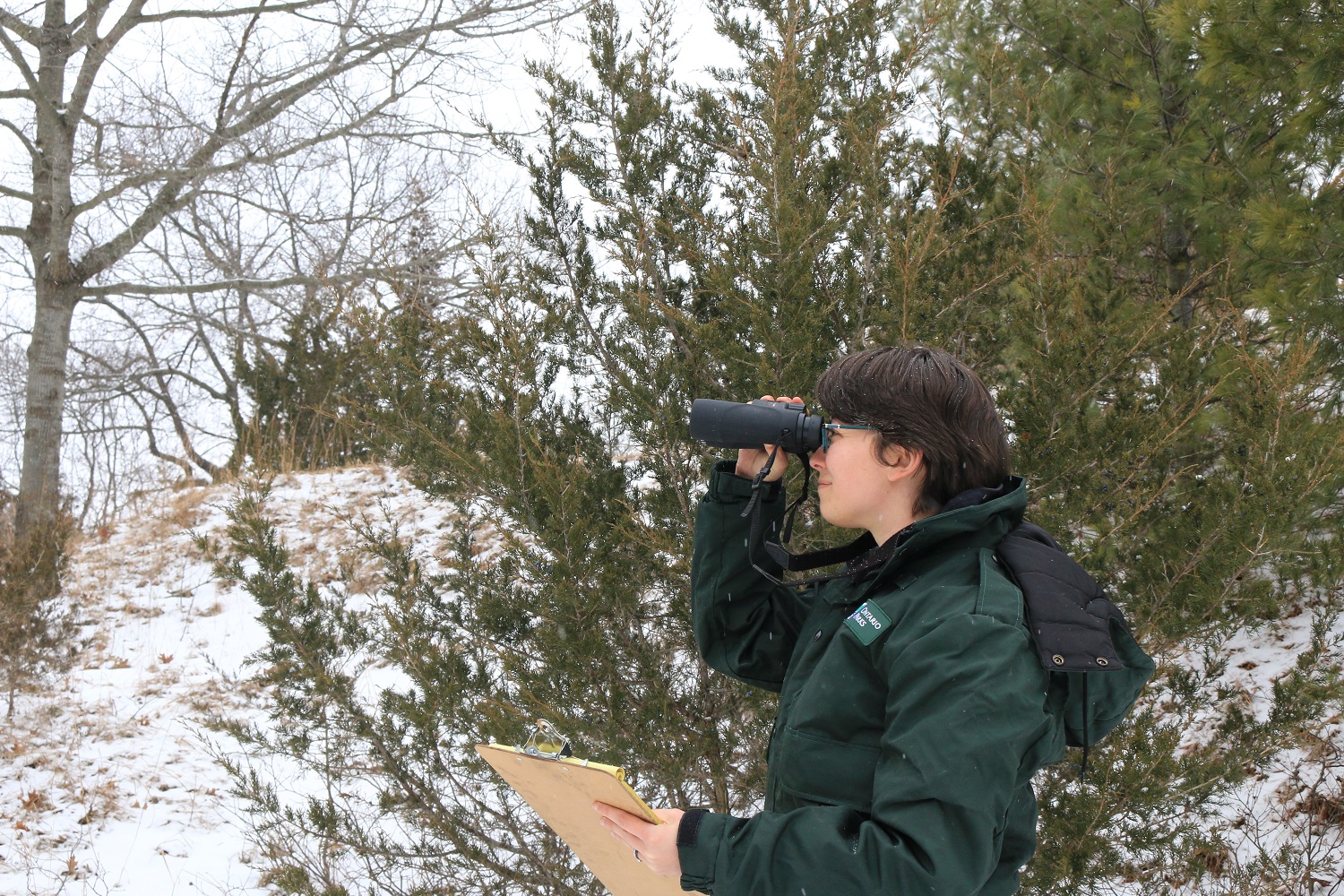
Tanya collects data on White-tailed Deer, which helps parks make decisions on how best to manage deer populations. This type of work brings her in direct collaborative work with local Indigenous communities who help with population control, bringing science and culture together.
“All of Ontario’s society and economy depends on functional natural ecosystems: clean air, clean water, healthy soils, biodiversity. Ontario Parks are intended to protect the best examples of healthy ecosystems that exist in this province, and working for Ontario Parks gives me the opportunity to protect these amazing places, learn about how they work, and share what I learn with everyone who visits.”
Rebecca Rogge, Resource Steward / Invasive Species Team Lead
Rebecca leads an invasive species search, monitoring, and management team based in northeastern Ontario. With the high water levels on the Great Lakes, we have been using a “cut-and-drown” method to cull and eventually eliminate stands of invasive Common Reed.
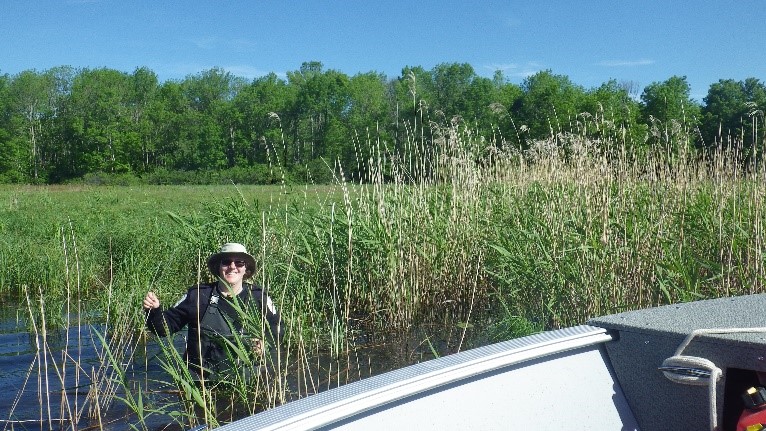
“I decided on a career in parks when I was 15 because I wanted to protect these special places and the unique features within them. Helping Northeast Zone get a handle on invasive species before they cause significant ecological/recreational damage is exactly the kind of work I envisioned myself doing.”
Morgan Hawkins, Wildlife Management Project Lead
Morgan writes wildlife policy to support our Ontario Parks staff. It’s important that park staff know how to respond to a bear in a camper’s cooler, a raccoon in the dumpster, or a “moose jam.” Parks are for the protection of wildlife and enjoyment of people — Morgan works to keep both safe and happy!
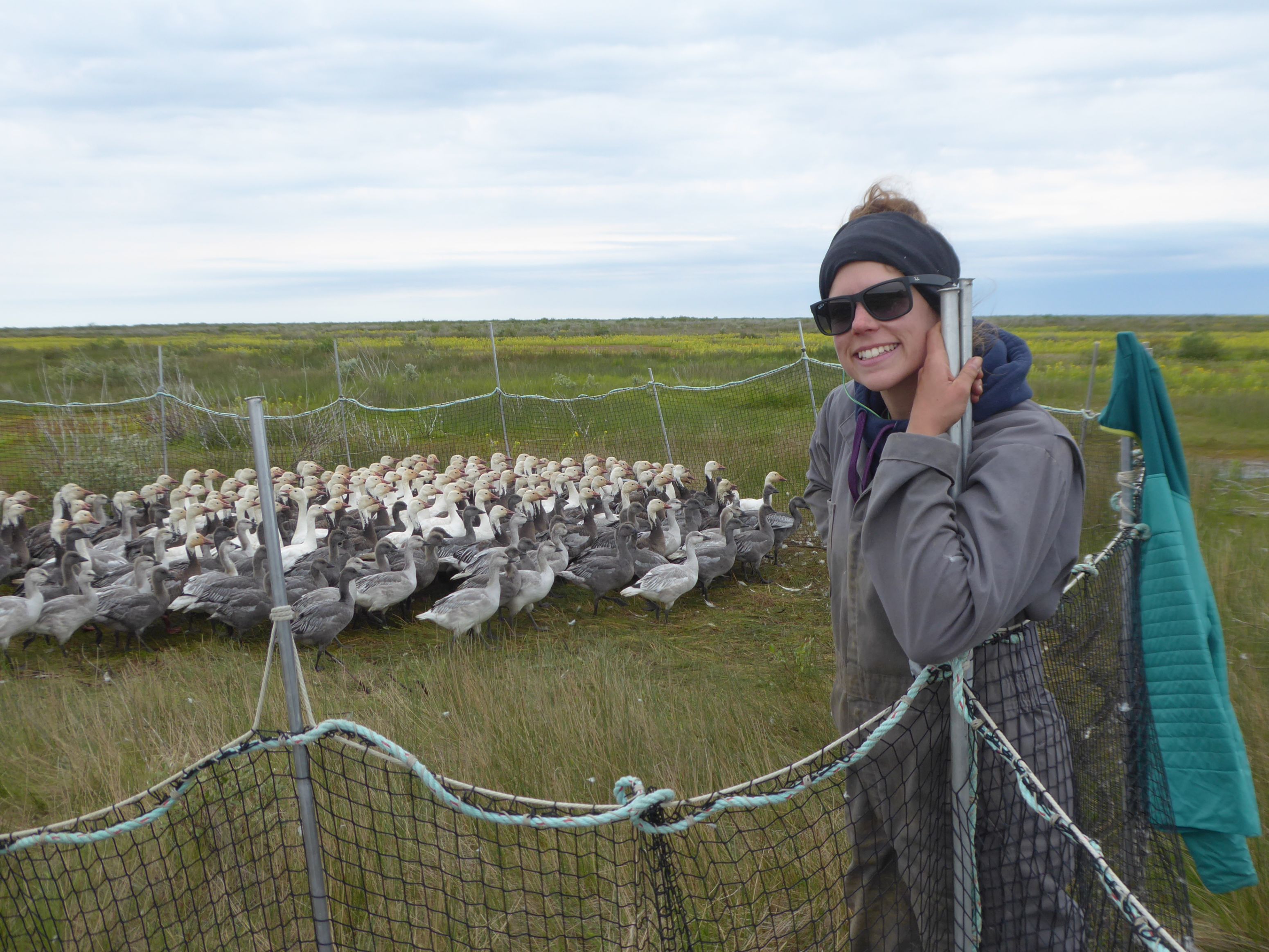
“It is important to be an advocate for our wildlife because it’s hard for them to speak up for themselves. Most of my career has been in the field on all-terrain vehicles in remote locations. It’s mentally and physically challenging, and many more women are joining that sector of science every day. Don’t be afraid to work outside your comfort zone.”
Amy Tanner, Assistant Ecologist
Working at our Southwest Zone Office allows Amy to participate in a wide variety of ecological work, including restoration and monitoring projects with species at risk, and projects focusing on the control of invasive species.

Amy has conducted White-tailed Deer aerial surveys in southern Ontario to track the deer population distribution and abundance in six parks. She has also conducted snake coverboard surveys to assess their population trends within the province, and contribute to the long-term monitoring of snakes within Ontario.
“The field of science has interested me ever since I was a child. I particularly loved nature and the outdoors and spent hours outside exploring, which I think directed me down the path of pursing a career in ecology.
“I really enjoy being able to see projects all the way from start to finish, from conducting the data collection through fieldwork, analyzing that data, writing a report, and consequently seeing adaptive management occurring based on the information. I know that my contribution to science is valuable when I can directly see changes occurring based on information and analysis that I have been able to provide.”
Heather Sanders-Arseneault, Bat Research and Monitoring Technician
Heather has been leading the research on the Little Brown Myotis at Pinery Provincial Park for the last two years. She is studying the movement of bats from one roosting location to another, tagging individual species, monitoring population, and educating park users on the importance of bats.

“Bats are especially fascinating creatures because they are so unique, and there is still so much that we don’t understand about them yet. On top of that, they unfortunately have a bad reputation that they really don’t deserve.
“I aim to set the record straight — to find answers to the questions that we have as researchers and as educators — so that we can properly support and live harmoniously with these critical animals.”
Taryn Lourie, Assistant Ecologist
Taryn focuses her efforts on supporting the recovery of endangered species. Provincial parks are special places that many species-at-risk call home. She is proud to contribute to important conservation efforts, and help others get involved too.

“Ontario Parks has allowed me to put my passion to work. I am currently working on implementing recovery activities for an endangered shorebird, the Piping Plover. This includes important things such as bird surveys, habitat restoration, assisting researchers, and training volunteers to be citizen scientists. By encouraging stewardship and sharing positive messages about conservation, we can accomplish so much to help species that are struggling in today’s world.
“I want to encourage girls to do what they love. If you are fascinated by creatures the creep and crawl, enjoy getting muddy, and even if people think you’re a bit “odd” for it, I want to let you know that it’s all okay. Be curious. Explore your world and follow your passions – you never know where they might take you!”
Amy Hall, Resource Management Leader
Amy has spent the past five years working on various resource management projects at Pinery Provincial Park. From species-at-risk to shoreline stewardship, she is an ambassador for ecosystem protection.
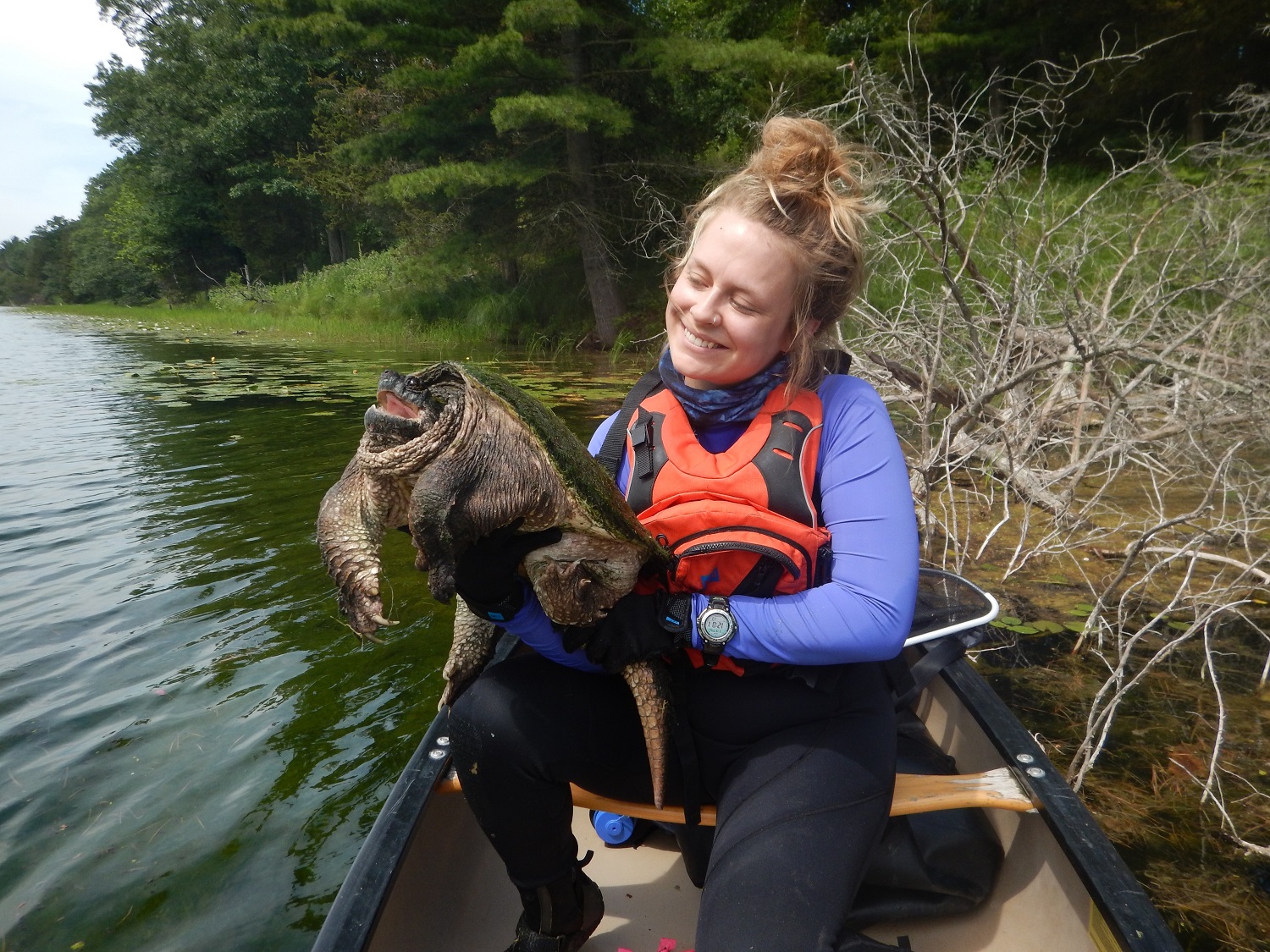
Amy has been leading a turtle project over the past few summers focusing on population recruitment and species monitoring. The driving focus of her project is ensuring as many hatchlings as possible make it through the summer and into the Old Ausable Channel in the fall. Amy has installed nest protectors on dozens of nests in the park, preventing predation from raccoons.
“I always had a passion for wildlife and the outdoors growing up, but it wasn’t until my first summer working at Pinery that I realized my love for turtles. I got the opportunity to do animal care for some of our resident (rescue) turtles at the Visitor Centre. Working up close with these amazing reptiles made me fall in love. Ever since that summer, I have been on a quest to learn as much as I can about reptiles, and to work to conserve Ontario’s wild reptile species. I have had many great opportunities to work with wildlife, and I feel extremely lucky every time I am able to work outside and in close proximity with wild animals. I realize it is a great privilege to do so, and no matter how many turtles I catch, it feels like a special experience every single time.”
To all amazing women in science working passionately to understand and protect our natural spaces: thank you for your hard work and expertise, and congratulations for all your achievements!
Why are your scientists picking up wildlife? Can I pick up snakes and turtles too?
Please do not handle birds, mammals, or reptiles unless you are helping to safely move them off the road. The staff members featured here are trained biologists engaged in professional research. These biologists are following a strict animal care protocol approved by the Ministry of Natural Resources and Forestry. These protocols review the desired outcome of the research, and ensure measures are taken to put the least possible amount of stress on the animal. We ask that you always observe animals from a distance for both the safety of you and the animal.
